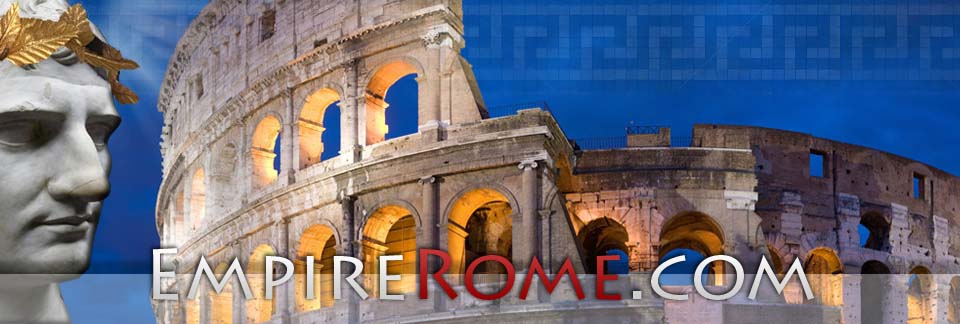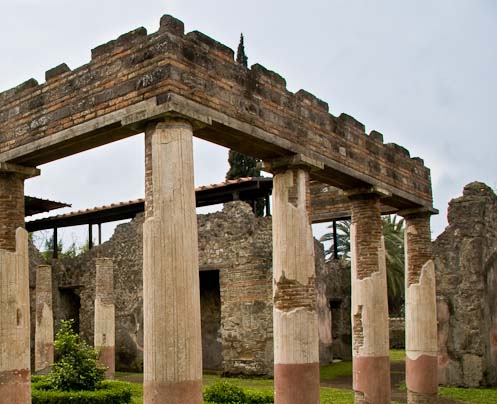Columns were very common in Ancient Rome and were used in many of the temples and buildings. Columns originated from the Ancient Romans’ counterpart, the Ancient Greeks. Even though columns originated from Greece, the Romans suited them to their tastes and architectural liking. Roman columns were purely for decoration, unlike Greek columns that were used to support their buildings and temples. There were four types of columns used throughout the Ancient Roman Empire. These columns were: Doric, Ionic, Corinthian and Tuscan.
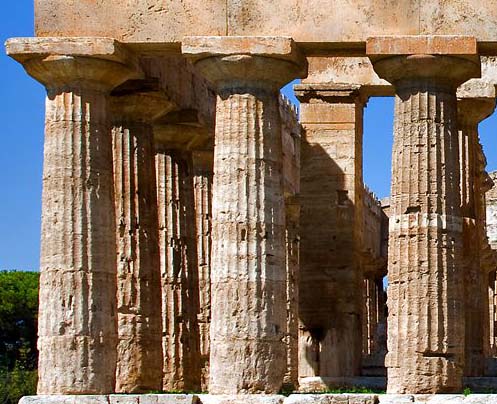
Doric style columns are the most plain of the four columns. They came about in the Doric Order. These columns were developed in Ancient Greece. Doric columns are stouter when compared to the Ionic or Corinthian columns. Doric columns were also the least used by the ancient Romans. This type of column came from the Dorians. One of the most famous examples of Doric columns is in the Parthenon. This temple was built by the Greeks for their goddess Athena.
Buildings with Doric Columns
• The Colosseum in Rome (1st Level)
• The Parthenon Temple at the Acropolis in Athens (Ancient Greek)
• The Temple of Hephaestus in Athens (Ancient Greek)
• The Temple of the Delians (Ancient Greek)
• The Temple of Zeus at Olympia (Ancient Greek)
• Basilica Palladiana (1st Level)
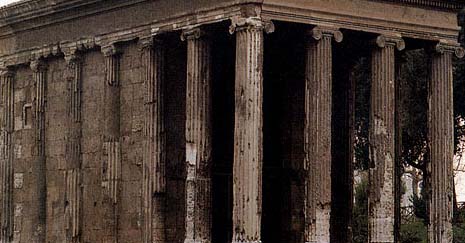
Ionic style columns are famous for their scrolls. These columns were created by the Asiatic Greeks. This column originated in Ionia. Iconic columns were used in mainland Greece in the 5th century . These columns were taller than Doric columns and also had an entasis. An entasis is a curve on the surface used for beatifying purposes and had no structural significance.
Buildings with Ionic Columns
• The Colosseum in Rome (2nd Level)
• Basilica Palladiana (2nd Level)
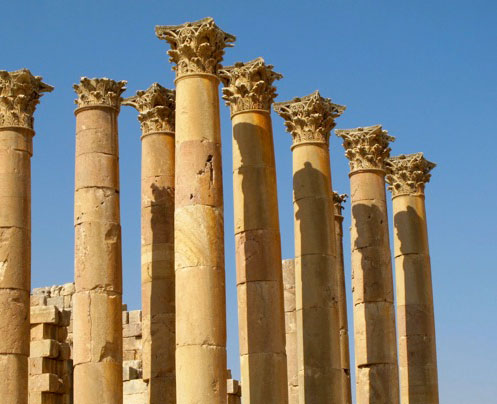
Corinthian style columns are very fancy in their design. These columns are different than the other three column types because they have acanthus leaves, foliage, and different flowers. The word Corinthian is a Greek word derived from the city Corinth. Compared to the rest of the columns, Corinthian columns are the most decorative. These columns also have an entasis just like the Ionic style column. This column was used the most by the Ancient Romans.
Buildings with Corinthian Columns
• The Pantheon in Rome (Temple of All the Gods)
• The Colosseum in Rome (3rd Level)
Tuscan style columns are the most solid and least decorative of the columns. This style was from the primitive Italic architectural design which predated the Ancient Greeks. Tuscan style columns were set on a simple base and were not grooved but had a smooth appearance, unlike the Doric columns. The shaft was slender compared to the Doric columns and had no carvings or ornaments. Tuscan columns were often placed in buildings with little architectural importance, like military buildings.
